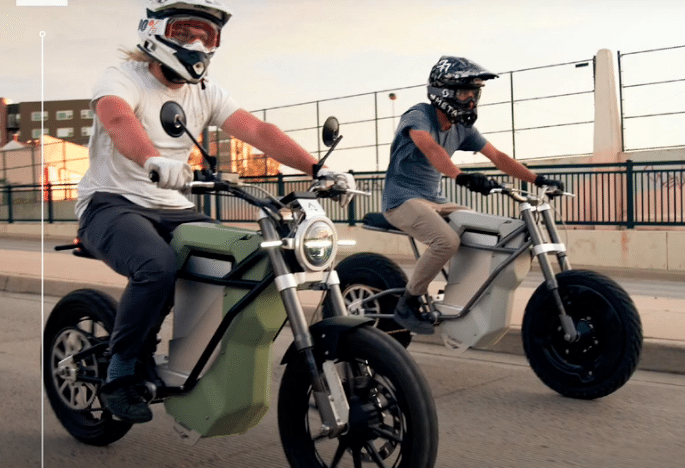
Electric mobility startup LAND announced it is scaling up production of its electric two-wheeler The District after securing an undisclosed Series A funding round led by investor Ancora.
Founded in 2020, LAND manufactures The District electric bicycles and motorcycles from its factory in Cleveland, Ohio. The District functions as an e-bike that can reach speeds of up to 27 mph or an e-motorcycle that can reach speeds of up to 70 mph, offering versatility.
The District Scrambler, an off-road electric-powered motorcycle, can travel up to 120 miles and its price starts at $7,800 per unit according to LAND’s website. Meanwhile, The District eMoto, the one designed for regular terrain, has a starting price of $8,200 and a similar autonomy.
LAND Plans to Expand its Manufacturing Capacity in Cleveland
The new Series A funding will allow LAND to hire more production staff, upgrade its 30,000 square foot manufacturing facility, and fulfill customer orders for The District that were previously on pre-order.
In addition to supporting vehicle scaling, the funding also enables the continued development of The District’s portable battery technology for businesses and consumers. The Chief Executive Officer of LAND, Scott Colosimo, said that the funding round is “a significant milestone as we shift from the pilot run to producing a higher volume of e-bikes for customers”.
The Chairman of Ancora, the venture capital firm leading the Series A round, said that the firm is “very excited to support a Northeast Ohio company that is accelerating energy independence”.
The EV and e-mobility sector in the U.S. is at an inflection point. Concerns about climate change, sustainability goals and technological advancements are driving demand for electric alternatives to gas-powered cars and motorcycles.
The US eMobility is Growing Fast on the Back of Government Incentives
The market size for electric mobility products in the U.S. was $28.5 billion in 2020 and is projected to grow at a 19.8% compound annual rate through 2028 according to data provided by Grand View Research.
Various factors are fueling this explosive growth. Government policies aimed at reducing carbon emissions and incentivizing EVs, such as fuel economy standards, are having an impact.
In addition, automakers are pouring billions of dollars into new EV programs to meet this demand. From Tesla’s Model 3 sedan to Ford’s lineup of 40 new EVs by 2022, major manufacturers are rolling out all-electric options across segments.
Also read: How to Invest in Tesla (TSLA) Stock – Beginner’s Guide
However, the COVID-19 pandemic temporarily stalled the industry’s momentum in 2020 as automotive sales plunged and supply chains were disrupted. Fortunately, economic recovery efforts and the easing of lockdowns have allowed the sector to regain its footing. Pent-up demand and government stimulus programs have revived consumer spending on EVs.
Within the broader e-mobility market, electric cars currently dominate with an 81% share but other segments are gaining traction. The global transition toward sustainable transportation is opening up opportunities for innovative startups like LAND focused on electric scooters, motorcycles and bicycles. As consumer preferences shift, these niche mobility solutions will play an important role in urban transportation ecosystems.
Technological advancements like improved battery designs are foundational to the industry’s success. Lithium-ion batteries, which dominated 55.8% of the EV battery market in 2020, are becoming cheaper, longer lasting, and more powerful. Advances in battery chemistries are pushing the technology forward, enabling higher voltages and greater range in electric vehicles.
Also read: Ford to Gain Access to Tesla’s Charging Tech and Stations Across US and Canada
With substantial investment from automakers, supportive government policies, breakthroughs in battery technology and growing consumer demand, the electric mobility market in the U.S. is poised for extraordinary growth in the years ahead.
For startups like LAND, the Series A round signals that investors believe strongly in the company’s potential to capture a meaningful share of this expanding market with its electric mobility products.
With the right execution, companies launching at this inflection point have a significant opportunity to grow and scale with an industry that is challenging the status quo of traditional combustion engine vehicles.
Other Related Articles: